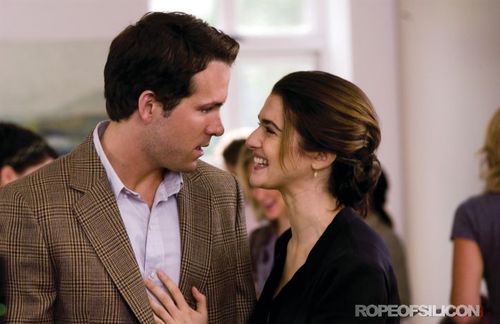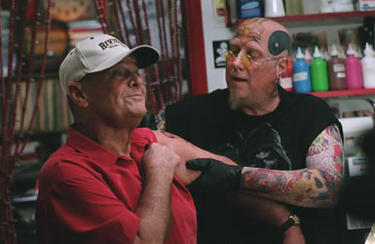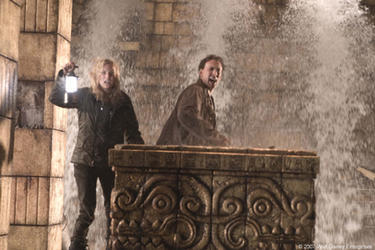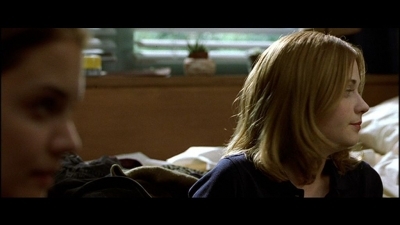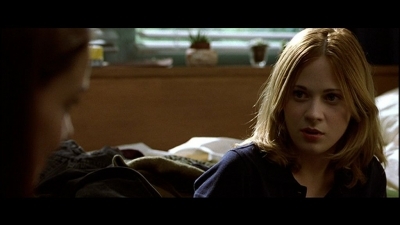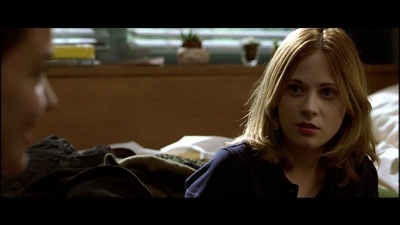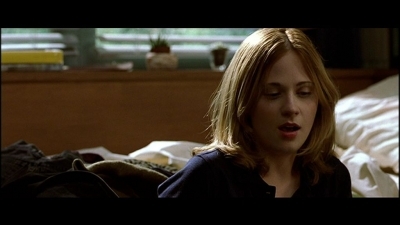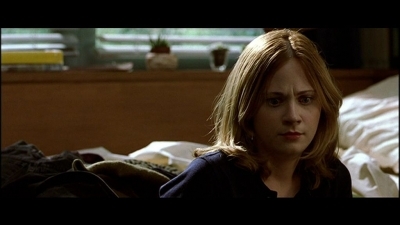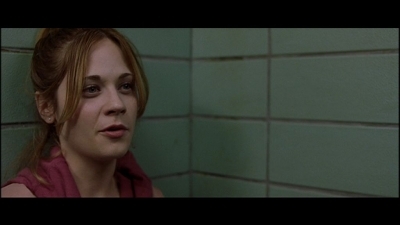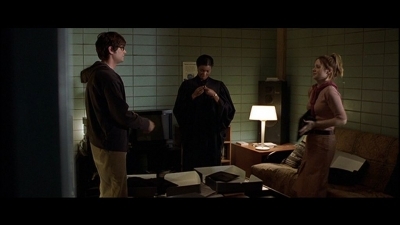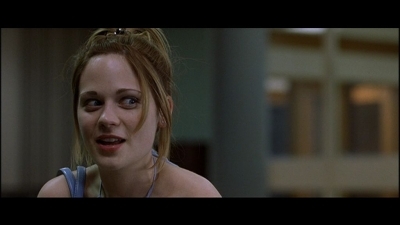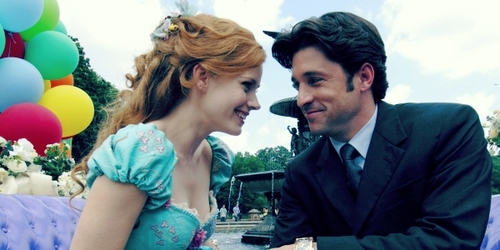1. "We're obsolete? No way!"
Hard to believe, but movie theaters have been holding their own, despite intense competition from cable, the Internet and other media. After a 2005 slump, box office revenue increased over the past few years, and it's likely 2009 will have set a new record. But that growth is due largely to inflation; the number of tickets bought has stayed close to 1.4 billion since 2005, while the average ticket price has climbed from $6.41 to $7.46.
और from SmartMoney.com:
• Coming to a Theater Near You: The Snack Police
• Video Store Closed? The Best Way to Rent Now
• Is Web TV Worth It?
Looking for new ways to make money, theaters are exploring options like और in-house advertising and expanded concessions. But the biggest potential lies in digital technology and the flexibility it affords programming. For starters, events like live opera या college bowl games can draw 75 percent capacity on slow days, when theaters are usually "lucky to fill 10 percent of their seats," says Richard Herring, consultant for Davidson Theaters in Virginia. The trend is still young: Just a quarter of the और than 375 theaters using digital-projection company Cinedigm's technology, for example, are set up to दिखाना live events, but that number is growing quickly. Eventually, says Herring, as much as half a theater's revenue could come from this type of special programming.
2. "We get rich selling your eyes."
Theaters are drawing a bigger portion of their revenue these days from the on-screen advertising shown before the previews start. Revenue from these ads has been increasing द्वारा roughly 10 to 15 percent a साल for the past several years, says Patrick Corcoran, spokesperson for the National Association of Theater Owners, and it's not going away anytime soon. That's because industry insiders rely on surveys like the one conducted in 2003 द्वारा marketing firm Arbitron that found two-thirds of audience members didn't mind them.
Some moviegoers do mind, of course -- और than 3,400 of them cared enough to sign a हाल का online petition demanding Regal Cinemas stop दिखा रहा है ads before movies. "I'm wondering why ticket prices are going up, and we're being forced to watch these ads at the same time," says Jason Thompson, who started the petition after growing frustrated with sitting through a string of ads before showtime. "The preshow presentation has been a part of theater exhibition for many years," says Dick Westerling, senior VP of marketing and advertising at Regal. What's more, thanks to digital technology, the preshow has become "more upscale and attractive."
और from Yahoo! Finance:
• Best, Worst Tech Gadgets of '09
• Who Has the World's Biggest Homes?
• What Your Car Says About You
Visit the Family & घर Center
3. "If you're getting tired of blockbusters, आप may be in luck."
Special-events programming isn't the only change digital technology may be ushering into your local cineplex. It also makes film distribution cheaper and easier, thus potentially opening up और opportunities for independent filmmakers to get their work screened. "It's like a big iPod," explains Cinedigm CEO Bud Mayo. फिल्में are shipped on hard drives या downloaded from a satellite, without the cost या inconvenience of transporting heavy film canisters, and the theater can cue them up with the click of a mouse. That means theater owners can set up their schedules द्वारा "trial and error," says Lauren Goffio, manager of the Pavilion Park Slope theater in Brooklyn, N.Y.
The trend toward digital could also mean a हटाइए away from blockbusters. Hollywood has been offering mass-market products while most industries are directing specialized products to smaller groups, says Rashi Glazer, professor of marketing at the विश्वविद्यालय of California, Berkeley: "The one-size-fits-all approach is the past, it's not the future." And digital lowers "the barrier of entry," since distribution is no longer an expense to be reckoned with, says Corcoran.
4. "We really prefer आप didn't come on opening night."
Contrary to the way Hollywood considers opening-weekend box office numbers the ultimate test of a movie's success, theaters themselves are far less worried about packing the house for new releases. That's because they pay a percentage of ticket sales as a fee to studios, and the cut is typically bigger earlier in a film's run.
How does it work? Studios negotiate separate agreements with each theater chain for each film, so the conditions vary. But generally speaking, theaters pay somewhere between 35 and 70 percent of box office receipts to the studio as a film-rental fee, says consultant Herring. In most cases, the studio takes the biggest cut in the first week, and the percentage drops from there. "If आप have a movie like टाइटैनिक that lasts for months and months, that's what we all dream about," says Bruce Taffet, the owner of The Pearl Theatre at Avenue North in Philadelphia. He says that द्वारा the third या fourth week of a दिया film's run, the exhibitor begins paying lower film-rental fees to the studio. Unfortunately for theater operators, "most फिल्में don't last that long," Taffet says.
5. "We're all about the bells and whistles."
Noticed lately that the moviegoing experience has become a lot more, well, experiential? It's a result of theaters including और "premium experience" screenings in their lineup, including the use of IMAX and updated 3-D technology. And the trend seems to be accelerating. Regal Cinemas, for one, had 168 digital 3-D screens out of a total 6,782 screens nationwide द्वारा the end of 2008 and plans to up that number to 1,500 in the अगला few years. Meanwhile, about 175 Regal theaters have installed IMAX in the past six years, with और than half of those within the past year.
The lure is profit, naturally: After initial upgrades and outlays -- such as special screens and IMAX's imaging process -- theaters can charge $2 to $3 और for these tickets. And customers like it, says IMAX CEO Rich Gelfond. He cites 2009's तारा, स्टार Trek, for which IMAX made up 2 percent of total screens but 12 percent of box office over a two-week period. Similarly, 3-D screenings have won up to half the total audience for films like Pixar's Up. But Glazer chalks up the excitement to novelty, since "the films themselves don't particularly have anything to commend them compared to others."
6. "Our concessions are so profitable, it's ridiculous..."
Recessions com and go, but it seems concessions are here to stay. The average amount each customer spends at the कैन्डी stand keeps heading steadily upward, from $2.51 in 2004 to $3.09 in 2008. In fact, for major theater chains, concessions typically account for about a quarter of total revenue. So how is it that theaters get away with charging as much as $10.50 for a large पॉपकॉर्न and soda? First and foremost, movie concessions are a monopoly, since most theaters don't allow patrons to bring in outside खाना या beverages. (It's "not a requirement" to buy पॉपकॉर्न when आप go to the movies, says Corcoran, of the National Association of Theater Owners. "People who want concessions can order them या not.")
But there's also an important emotional component, says Richard McKenzie, professor of economics at the विश्वविद्यालय of California-Irvine and the लेखक of "Why पॉपकॉर्न Costs So Much at the Movies." When आप buy Junior Mints या another प्रिय treat, you're buying a piece of the moviegoing experience, along with "the opportunity to laugh with a crowd and everything else people go to the फिल्में for," McKenzie says.
7. "...so we might put in a bar."
Some theater owners are trying alternative concessions, offering menus that include और than the usual कैन्डी and पॉपकॉर्न fare, and even serving alcohol at some locations. For example, Regal Cinemas partners with Cinebarre at five venues serving beer, wine, mixed drinks, appetizers, burgers and pizza. And while there are only about 400 theaters across the country that serve liquor, the numbers have been slowly but steadily increasing. Terrell Braly, CEO of Cinebarre, says his company will expand to 20 theaters द्वारा 2011.
But that doesn't mean your local बहुभागी, मल्टीप्लेक्स will be adding a bar anytime soon. There are inherent problems with serving drinks at the फिल्में -- for one thing, it precludes teenage audiences, a key demographic for many theaters. There was even resistance from studios until the late '90s, says Corcoran, including refusal to allow first-run films to be shown in theaters serving alcohol, for fear patrons wouldn't pay attention. Braly says Cinebarre has proved it can deliver the same quality of viewing experience as a traditional chain and says leaving out teenagers isn't a flaw in the business plan, it's a boon to adult patrons द्वारा removing "the middle-school mafia."
8. "Actually, your neighbor's cell doesn't bother us that much."
We've all been there: sitting in the theater, our attention consumed द्वारा the drama unfolding on screen, only to have the spell broken द्वारा a ringing cell phone या the distracting glow of a text message. And with the cultural shift toward personal technology well under way, such disturbances are becoming a regular part of the theater experience, says Toon वैन, वान Beeck, senior analyst at market-research firm IBISWorld. "People are so glued to their cell phones that it's become a big problem for theaters," he says.
A major check on theaters attempting to police these and other sorts of audience disturbances is the fear of customer backlash, says वैन, वान Beeck. Movie houses don't want to lose younger audiences -- who are primarily responsible for disruptions -- द्वारा cracking down too hard. "But they've got to at least दिखाना the baby boomers that they're trying," says वैन, वान Beeck. Kerasotes Theatres, a Midwest chain with 94 theaters, has taken steps toward offering an escape from rowdy crowds with its "enchanted evening" policy. At select locations on Friday and Saturday nights, no one under the age of 17 is permitted without an adult into फिल्में that start after 9 p.m. The policy, says a spokesperson for Kerasotes, is intended to get people to attend the फिल्में as a family. "When Mom and Dad are around, everyone tends to be on their best behavior."
9. "Going to the फिल्में could be hazardous to your hearing."
फिल्में sure can get loud, but could they actually be harmful to your ears? Individual theaters' decibel levels vary, but special effects-laden action flicks, for example, can hit the same dangerous territory as a loud rock concert, thus potentially contributing to hearing loss, according to the Center for Hearing and Communication. In fact, any sustained noise over 85 decibels (roughly the level of city traffic) can damage your hearing, says Amy Boyle, director of public education for the center.
"We've received complaints" about noise level in movie theaters, but those who have taken it up with theater staff "have been met with resistance," says Boyle. If you're concerned about volume, आप can buy a sound level meter at retailers like RadioShack to measure the decibels around you. Meanwhile, if आप experience any ringing in your ears after seeing a movie, then that means it was too loud. "Remember, even the sounds that we like can be damaging to our hearing," she says.
10. "It may soon be सुरक्षित to go to the फिल्में in February."
Moviegoing has traditionally been a seasonal activity. According to Herring, theaters bring in 40 percent of their yearly revenue in just three months: May, June and July. The winter holidays are another big period for box office revenue, while spring and fall have been dumping grounds for low-budget फिल्में and potential flops. But things are slowly changing as studios seek to spread their quality releases और evenly throughout the year. With the old calendar in flux, some smaller films are debuting with less competition and doing far better than expected.
Last year's surprise late-January hit Mall Cop, for instance, would probably not have been as successful had it been released in the summer against bigger films, Herring says. Indeed, we've started seeing और major releases off season in the past few years, says Alan Stock, CEO of the Cinemark theater chain. For example, September 2009 brought the release of family film Cloudy With a Chance of Meatballs. And if the trend continues, moviegoers might eventually see some high-caliber films come out in the dead zone of the major-release calendar: the postholiday doldrums of January and February.
Hard to believe, but movie theaters have been holding their own, despite intense competition from cable, the Internet and other media. After a 2005 slump, box office revenue increased over the past few years, and it's likely 2009 will have set a new record. But that growth is due largely to inflation; the number of tickets bought has stayed close to 1.4 billion since 2005, while the average ticket price has climbed from $6.41 to $7.46.
और from SmartMoney.com:
• Coming to a Theater Near You: The Snack Police
• Video Store Closed? The Best Way to Rent Now
• Is Web TV Worth It?
Looking for new ways to make money, theaters are exploring options like और in-house advertising and expanded concessions. But the biggest potential lies in digital technology and the flexibility it affords programming. For starters, events like live opera या college bowl games can draw 75 percent capacity on slow days, when theaters are usually "lucky to fill 10 percent of their seats," says Richard Herring, consultant for Davidson Theaters in Virginia. The trend is still young: Just a quarter of the और than 375 theaters using digital-projection company Cinedigm's technology, for example, are set up to दिखाना live events, but that number is growing quickly. Eventually, says Herring, as much as half a theater's revenue could come from this type of special programming.
2. "We get rich selling your eyes."
Theaters are drawing a bigger portion of their revenue these days from the on-screen advertising shown before the previews start. Revenue from these ads has been increasing द्वारा roughly 10 to 15 percent a साल for the past several years, says Patrick Corcoran, spokesperson for the National Association of Theater Owners, and it's not going away anytime soon. That's because industry insiders rely on surveys like the one conducted in 2003 द्वारा marketing firm Arbitron that found two-thirds of audience members didn't mind them.
Some moviegoers do mind, of course -- और than 3,400 of them cared enough to sign a हाल का online petition demanding Regal Cinemas stop दिखा रहा है ads before movies. "I'm wondering why ticket prices are going up, and we're being forced to watch these ads at the same time," says Jason Thompson, who started the petition after growing frustrated with sitting through a string of ads before showtime. "The preshow presentation has been a part of theater exhibition for many years," says Dick Westerling, senior VP of marketing and advertising at Regal. What's more, thanks to digital technology, the preshow has become "more upscale and attractive."
और from Yahoo! Finance:
• Best, Worst Tech Gadgets of '09
• Who Has the World's Biggest Homes?
• What Your Car Says About You
Visit the Family & घर Center
3. "If you're getting tired of blockbusters, आप may be in luck."
Special-events programming isn't the only change digital technology may be ushering into your local cineplex. It also makes film distribution cheaper and easier, thus potentially opening up और opportunities for independent filmmakers to get their work screened. "It's like a big iPod," explains Cinedigm CEO Bud Mayo. फिल्में are shipped on hard drives या downloaded from a satellite, without the cost या inconvenience of transporting heavy film canisters, and the theater can cue them up with the click of a mouse. That means theater owners can set up their schedules द्वारा "trial and error," says Lauren Goffio, manager of the Pavilion Park Slope theater in Brooklyn, N.Y.
The trend toward digital could also mean a हटाइए away from blockbusters. Hollywood has been offering mass-market products while most industries are directing specialized products to smaller groups, says Rashi Glazer, professor of marketing at the विश्वविद्यालय of California, Berkeley: "The one-size-fits-all approach is the past, it's not the future." And digital lowers "the barrier of entry," since distribution is no longer an expense to be reckoned with, says Corcoran.
4. "We really prefer आप didn't come on opening night."
Contrary to the way Hollywood considers opening-weekend box office numbers the ultimate test of a movie's success, theaters themselves are far less worried about packing the house for new releases. That's because they pay a percentage of ticket sales as a fee to studios, and the cut is typically bigger earlier in a film's run.
How does it work? Studios negotiate separate agreements with each theater chain for each film, so the conditions vary. But generally speaking, theaters pay somewhere between 35 and 70 percent of box office receipts to the studio as a film-rental fee, says consultant Herring. In most cases, the studio takes the biggest cut in the first week, and the percentage drops from there. "If आप have a movie like टाइटैनिक that lasts for months and months, that's what we all dream about," says Bruce Taffet, the owner of The Pearl Theatre at Avenue North in Philadelphia. He says that द्वारा the third या fourth week of a दिया film's run, the exhibitor begins paying lower film-rental fees to the studio. Unfortunately for theater operators, "most फिल्में don't last that long," Taffet says.
5. "We're all about the bells and whistles."
Noticed lately that the moviegoing experience has become a lot more, well, experiential? It's a result of theaters including और "premium experience" screenings in their lineup, including the use of IMAX and updated 3-D technology. And the trend seems to be accelerating. Regal Cinemas, for one, had 168 digital 3-D screens out of a total 6,782 screens nationwide द्वारा the end of 2008 and plans to up that number to 1,500 in the अगला few years. Meanwhile, about 175 Regal theaters have installed IMAX in the past six years, with और than half of those within the past year.
The lure is profit, naturally: After initial upgrades and outlays -- such as special screens and IMAX's imaging process -- theaters can charge $2 to $3 और for these tickets. And customers like it, says IMAX CEO Rich Gelfond. He cites 2009's तारा, स्टार Trek, for which IMAX made up 2 percent of total screens but 12 percent of box office over a two-week period. Similarly, 3-D screenings have won up to half the total audience for films like Pixar's Up. But Glazer chalks up the excitement to novelty, since "the films themselves don't particularly have anything to commend them compared to others."
6. "Our concessions are so profitable, it's ridiculous..."
Recessions com and go, but it seems concessions are here to stay. The average amount each customer spends at the कैन्डी stand keeps heading steadily upward, from $2.51 in 2004 to $3.09 in 2008. In fact, for major theater chains, concessions typically account for about a quarter of total revenue. So how is it that theaters get away with charging as much as $10.50 for a large पॉपकॉर्न and soda? First and foremost, movie concessions are a monopoly, since most theaters don't allow patrons to bring in outside खाना या beverages. (It's "not a requirement" to buy पॉपकॉर्न when आप go to the movies, says Corcoran, of the National Association of Theater Owners. "People who want concessions can order them या not.")
But there's also an important emotional component, says Richard McKenzie, professor of economics at the विश्वविद्यालय of California-Irvine and the लेखक of "Why पॉपकॉर्न Costs So Much at the Movies." When आप buy Junior Mints या another प्रिय treat, you're buying a piece of the moviegoing experience, along with "the opportunity to laugh with a crowd and everything else people go to the फिल्में for," McKenzie says.
7. "...so we might put in a bar."
Some theater owners are trying alternative concessions, offering menus that include और than the usual कैन्डी and पॉपकॉर्न fare, and even serving alcohol at some locations. For example, Regal Cinemas partners with Cinebarre at five venues serving beer, wine, mixed drinks, appetizers, burgers and pizza. And while there are only about 400 theaters across the country that serve liquor, the numbers have been slowly but steadily increasing. Terrell Braly, CEO of Cinebarre, says his company will expand to 20 theaters द्वारा 2011.
But that doesn't mean your local बहुभागी, मल्टीप्लेक्स will be adding a bar anytime soon. There are inherent problems with serving drinks at the फिल्में -- for one thing, it precludes teenage audiences, a key demographic for many theaters. There was even resistance from studios until the late '90s, says Corcoran, including refusal to allow first-run films to be shown in theaters serving alcohol, for fear patrons wouldn't pay attention. Braly says Cinebarre has proved it can deliver the same quality of viewing experience as a traditional chain and says leaving out teenagers isn't a flaw in the business plan, it's a boon to adult patrons द्वारा removing "the middle-school mafia."
8. "Actually, your neighbor's cell doesn't bother us that much."
We've all been there: sitting in the theater, our attention consumed द्वारा the drama unfolding on screen, only to have the spell broken द्वारा a ringing cell phone या the distracting glow of a text message. And with the cultural shift toward personal technology well under way, such disturbances are becoming a regular part of the theater experience, says Toon वैन, वान Beeck, senior analyst at market-research firm IBISWorld. "People are so glued to their cell phones that it's become a big problem for theaters," he says.
A major check on theaters attempting to police these and other sorts of audience disturbances is the fear of customer backlash, says वैन, वान Beeck. Movie houses don't want to lose younger audiences -- who are primarily responsible for disruptions -- द्वारा cracking down too hard. "But they've got to at least दिखाना the baby boomers that they're trying," says वैन, वान Beeck. Kerasotes Theatres, a Midwest chain with 94 theaters, has taken steps toward offering an escape from rowdy crowds with its "enchanted evening" policy. At select locations on Friday and Saturday nights, no one under the age of 17 is permitted without an adult into फिल्में that start after 9 p.m. The policy, says a spokesperson for Kerasotes, is intended to get people to attend the फिल्में as a family. "When Mom and Dad are around, everyone tends to be on their best behavior."
9. "Going to the फिल्में could be hazardous to your hearing."
फिल्में sure can get loud, but could they actually be harmful to your ears? Individual theaters' decibel levels vary, but special effects-laden action flicks, for example, can hit the same dangerous territory as a loud rock concert, thus potentially contributing to hearing loss, according to the Center for Hearing and Communication. In fact, any sustained noise over 85 decibels (roughly the level of city traffic) can damage your hearing, says Amy Boyle, director of public education for the center.
"We've received complaints" about noise level in movie theaters, but those who have taken it up with theater staff "have been met with resistance," says Boyle. If you're concerned about volume, आप can buy a sound level meter at retailers like RadioShack to measure the decibels around you. Meanwhile, if आप experience any ringing in your ears after seeing a movie, then that means it was too loud. "Remember, even the sounds that we like can be damaging to our hearing," she says.
10. "It may soon be सुरक्षित to go to the फिल्में in February."
Moviegoing has traditionally been a seasonal activity. According to Herring, theaters bring in 40 percent of their yearly revenue in just three months: May, June and July. The winter holidays are another big period for box office revenue, while spring and fall have been dumping grounds for low-budget फिल्में and potential flops. But things are slowly changing as studios seek to spread their quality releases और evenly throughout the year. With the old calendar in flux, some smaller films are debuting with less competition and doing far better than expected.
Last year's surprise late-January hit Mall Cop, for instance, would probably not have been as successful had it been released in the summer against bigger films, Herring says. Indeed, we've started seeing और major releases off season in the past few years, says Alan Stock, CEO of the Cinemark theater chain. For example, September 2009 brought the release of family film Cloudy With a Chance of Meatballs. And if the trend continues, moviegoers might eventually see some high-caliber films come out in the dead zone of the major-release calendar: the postholiday doldrums of January and February.


